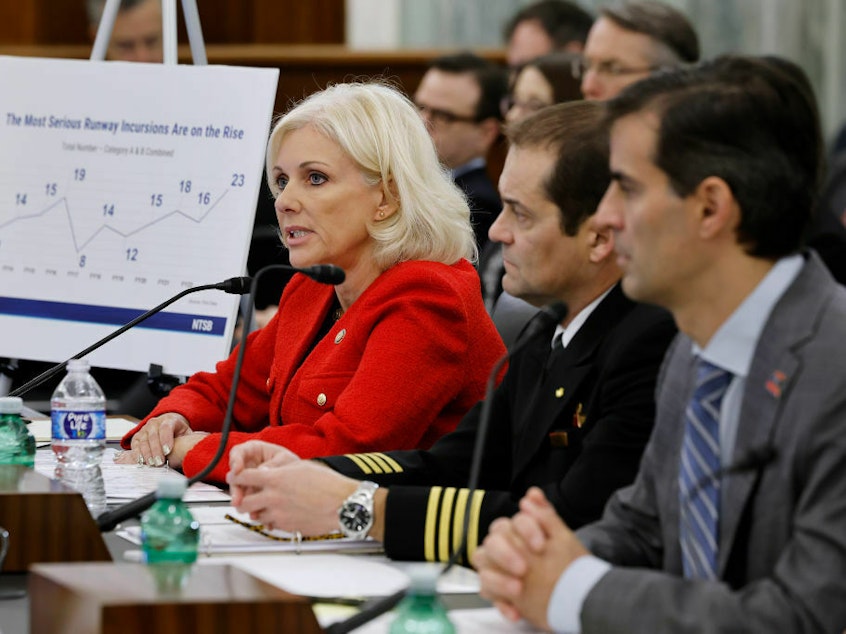A shortage of air traffic controllers is hurting safety, aviation experts warn Senate

WASHINGTON — A series of close calls on runways across the United States has gotten the attention of aviation experts — and a key Senate committee that oversees the industry.
Safety experts and union leaders told a Senate Commerce subcommittee Thursday that a shortage of air traffic controllers is leading to fatigue and distraction, likely contributing to a growing list of close calls at major airports this year.
The aviation safety system is "showing clear signs of strain that we cannot ignore," said Jennifer Homendy, the chair of the National Safety Transportation Board, which is charged with investigating near collisions and other safety incidents.
"Air traffic controllers are being required to do mandatory overtime," Homendy testified at the hearing. "It ends up leading to fatigue and distraction, which is exactly what we're seeing as part of these incident investigations. And it all just comes down to the shortage of staffing."
Rich Santa, the president of the National Air Traffic Controllers Association, said that many air traffic facilities are short-staffed. Mandatory overtime, including 6-day workweeks and 10-hour shifts, are routine, he told the subcommittee.
Sponsored
"It's unsustainable," Santa testified. "The answer is not continuing to burden us with more fatigue, and continuing to burden us with more effort and work. It's hiring the right amount of controllers" so that our facilities are not understaffed.
The volume of air travel has rebounded sharply after the COVID-19 pandemic, leaving the Federal Aviation Administration scrambling to hire and train enough air traffic controllers to keep up with demand. In June, the Department of Transportation's Office of Inspector General found that 77% of critical air traffic control facilities were short-staffed.
The FAA is working to "hire, train and certify as many controllers as possible," said Tim Arel, the Chief Operating Officer of the FAA's Air Traffic Organization. "While we have a long way to go, many of the facilities are much healthier than they were previously," Arel told the committee.
But some senators are skeptical that the FAA is doing enough to address the staffing shortage.
"At this rate, it would take years for the FAA to hire enough controllers to meet the need," said Senator Ted Cruz (R-Texas), the ranking Republican member of the Senate Commerce Committee. Cruz asked Arel if the FAA's training facility in Oklahoma is sufficient, and whether it would help to add a second training site.
Sponsored
"The greatest challenge is not the physical space" at the academy, Arel said. "It's the number of retired controllers, either military or FAA, that are available to provide instruction," and are willing to relocate to teach at the academy.
Senators from both parties expressed deep concerns about the current situation.
"Our nation is experiencing an aviation safety crisis," said Senator Tammy Duckworth (D-IL), who was deployed to Iraq as a helicopter pilot for the Illinois Army National Guard. "Near-misses are happening way too frequently, and I refuse to be complacent in waiting to act until the next runway incursion becomes a fatal collision." [Copyright 2023 NPR]


